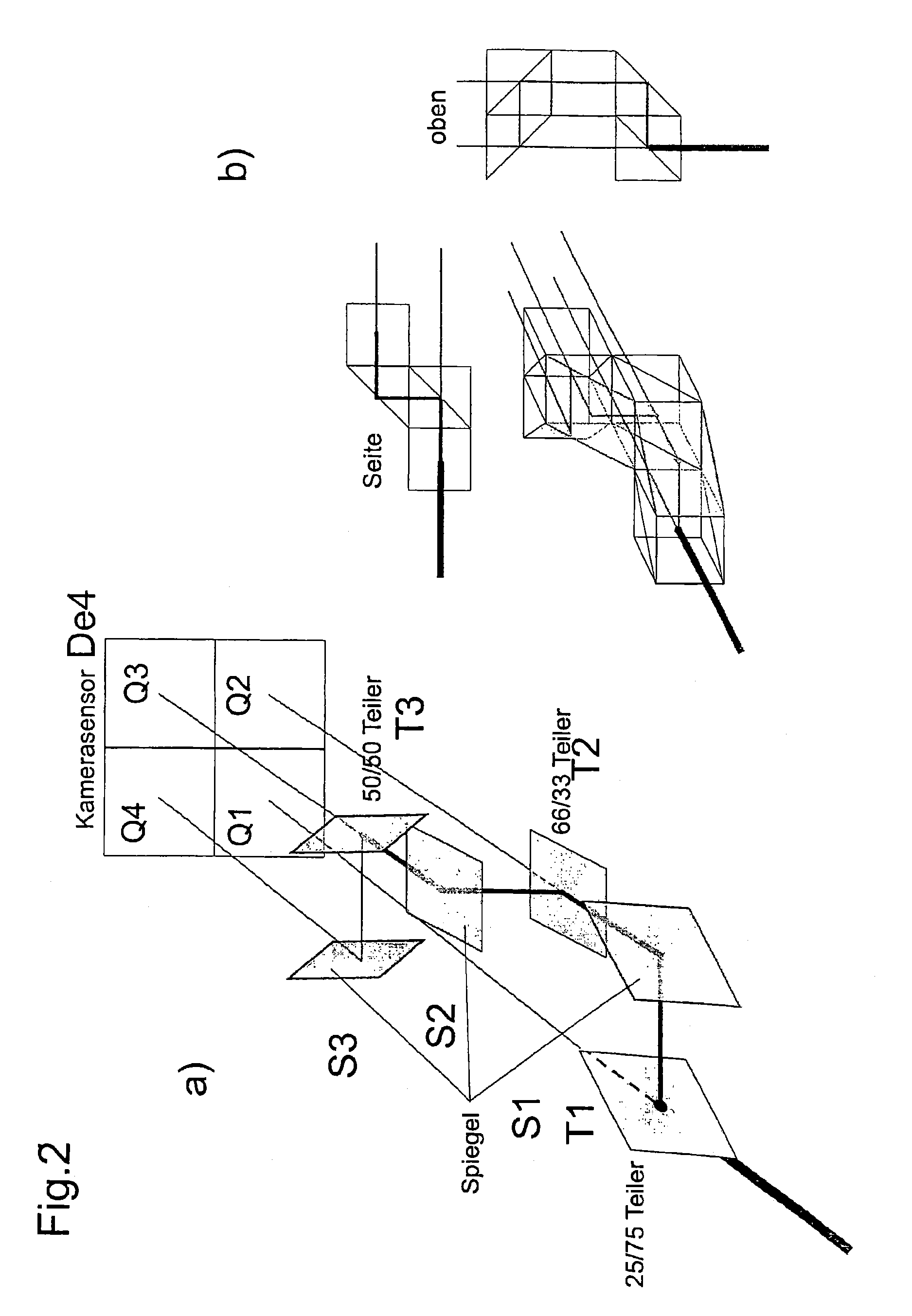High resolution microscope and image divider assembly
a high-resolution, microscope technology, applied in the field of microscopy, can solve the problems of limited image field, distortion of the spot of the molecule, and the method of high-resolution based on localization described above,
- Summary
- Abstract
- Description
- Claims
- Application Information
AI Technical Summary
Benefits of technology
Problems solved by technology
Method used
Image
Examples
Embodiment Construction
[0066]FIG. 1 shows a wide field beam path with a dilated light source and a spatially resolved planar detector such as a CCD camera.
[0067]The light from light source L1 reaches the sample Pr (reflected) via Dic 1 and the objective O. The reflected and fluorescent sample light passes through the objective in the direction of detection. Selection of the desired portion of the light is performed at splitter Dic 1 through filter EF, i.e. the reflected light is suppressed, and only the fluorescent light passes on in the direction of detection. The sample light reaches the arrangement according to the invention consisting of BS, P1, and P2 and then the detector DE via SP, L1, and L2, E1 and E2 are different object planes in the sample Pr.
[0068]FIG. 1a shows an enlarged view of the variable image splitter module BM according to the invention. An image of the sample Pr is split via the beam-splitter cube BS into two partial images on the detector DE. The prism P1 is moved by a motor perpend...
PUM
 Login to View More
Login to View More Abstract
Description
Claims
Application Information
 Login to View More
Login to View More - R&D
- Intellectual Property
- Life Sciences
- Materials
- Tech Scout
- Unparalleled Data Quality
- Higher Quality Content
- 60% Fewer Hallucinations
Browse by: Latest US Patents, China's latest patents, Technical Efficacy Thesaurus, Application Domain, Technology Topic, Popular Technical Reports.
© 2025 PatSnap. All rights reserved.Legal|Privacy policy|Modern Slavery Act Transparency Statement|Sitemap|About US| Contact US: help@patsnap.com



